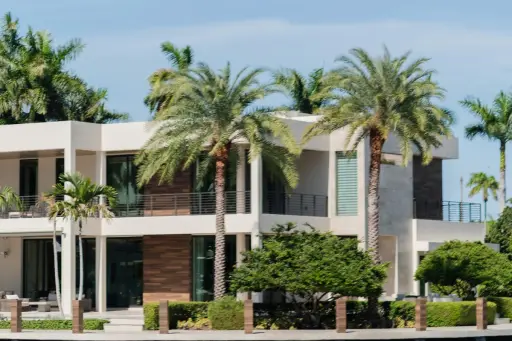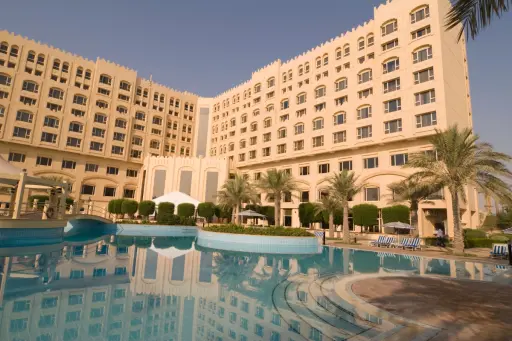Knight Frank
•09 Oct 2025
Qatar's Luxury Rental Market: Short-Term vs. Long-Term Opportunities for Investors
Investor Intelligence
Qatar's property landscape has transformed dramatically over the past few years. With visitor numbers climbing to 5.1 million in 2024 and tourism continuing its upward trajectory into 2025, the market for high-end accommodation has never looked stronger. For investors eyeing opportunities in this Gulf nation, understanding the dynamics between short-term and long-term rental strategies is crucial to maximizing returns while managing risk effectively.
Understanding Qatar's Luxury Rental Market Fundamentals
Qatar's rental sector benefits from two powerful demand drivers working simultaneously. On one hand, the country's tourism industry has bounced back impressively since 2022, fueled by enhanced international connectivity and strategic marketing initiatives. On the other, an expatriate population comprising 85–89% of total residents creates consistent demand for quality residential accommodation.
This dual-demand structure makes Qatar's luxury rental market particularly attractive. While many markets depend primarily on either tourism or residential demand, Qatar offers investors the flexibility to tap into both streams or switch between them as conditions evolve.
Current yield expectations reflect this opportunity. Luxury properties in prime locations like Lusail and The Pearl can generate gross returns between 7–9% in specific pockets, though market-wide residential yields averaged around 5.1% in the first quarter of 2025. For context, these figures compare favorably with many established markets where institutional capital has already compressed returns.
What's Driving Demand in Qatar's Luxury Rental Market?

Several structural factors underpin the current investment case. Tourism recovery ranks high among them. Qatar Tourism reports rising occupancy rates and room nights sold throughout 2025, supported by new flight routes and airline partnerships that have expanded the country's global accessibility. Business travelers, leisure tourists, and event attendees are all contributing to room-night demand across the accommodation spectrum.
The expatriate workforce provides the foundation for long-term residential demand. Professionals relocating to Qatar whether in finance, energy, construction, or other sectors typically seek well-appointed apartments or villas with modern amenities. Many arrive on corporate housing packages that allow for premium rental rates, creating a relatively stable tenant pool that's less price-sensitive than in many other markets.
Major developments deserve attention as well. Districts like Lusail, The Pearl, West Bay, and Al Daayen have positioned themselves as luxury rental hubs. Transaction activity in Doha and surrounding municipalities remained strong through 2025, indicating healthy investor confidence. These developments offer the quality and amenities that both tourists and wealthy expatriates expect.
It's worth clarifying one point about events: Expo 2027 is scheduled for Belgrade, not Qatar. While Qatar actively participates in international expos and hosts numerous events that boost its tourism profile, investors shouldn't model Expo 2027 crowds arriving in Doha. Event-driven demand should be treated as incremental to the already rising tourism baseline rather than a one-time spike.
For those considering investing in luxury real estate in Qatar, these fundamentals create a compelling backdrop for both short-term and long-term rental strategies.
Short-Term Rentals in Qatar's Luxury Rental Market: Opportunities and Challenges
Short-term rentals think holiday homes and serviced apartments can deliver impressive yields in prime tourism nodes. Properties in The Pearl, Lusail, and parts of West Bay benefit from strong nightly rates during peak periods, and some market analysis suggests short-term strategies can outperform long-term yields when occupancy stays strong.
However, gross revenue tells only part of the story. Net returns depend heavily on occupancy rates, management costs, platform fees, cleaning expenses, and licensing requirements. Unlike long-term tenancies where a single lease covers twelve months, short-term properties experience constant turnover. Each guest checkout triggers cleaning, linen changes, and preparation for the next arrival. Dynamic pricing requires continuous market monitoring, and guest communications demand prompt responses.
Operating complexity scales quickly. Professional property management becomes essential rather than optional for anyone serious about short-term rentals. Guest experience, compliance with safety standards, and platform reputation all require consistent attention. Owners who underestimate these operational demands often find their net returns disappointing despite strong gross revenue.
Regulation adds another layer of consideration. Qatar requires holiday-home licenses for short-term tourism units, administered through Qatar Tourism's Holiday Homes licensing process. Properties must meet specific safety and quality standards, and hosts need explicit landlord consent if the property isn't owner-occupied. Licensing oversight increased notably through 2024–25, and non-compliance carries material risk. Before marketing any property for short-term use, investors must secure proper licenses and verify that lease terms permit such arrangements.
Demand follows tourism patterns, which introduces seasonality and vulnerability to external shocks. Geopolitical events or sudden drops in travel confidence can crater occupancy rates quickly. Recent regional incidents have illustrated this sensitivity clearly.
Long-Term Rentals in Qatar's Luxury Rental Market: The Stability Play
Long-term residential leases offer a different value proposition. While gross yields may average around 5% market-wide with luxury pockets achieving higher returns, the appeal lies in predictability and simplicity. A single tenant on a twelve-month lease provides consistent monthly cashflow without the operational intensity of short-term rentals.
This demand is anchored by employment rather than discretionary travel. Corporate housing packages, professional relocations, and family moves create tenant demand that proves more resilient during economic downturns or geopolitical uncertainty. When tourism falters, the expatriate workforce continues needing places to live.
Operational complexity drops substantially. Landlords negotiate lease terms once annually rather than managing dozens or hundreds of guest stays. Maintenance becomes more predictable, and tenant turnover occurs infrequently compared with the constant churn of short-term guests. Property management requirements remain modest, many owners handle long-term properties themselves or with minimal professional assistance.
Financing considerations may favor long-term strategies as well. Lenders typically prefer steady cash flows when evaluating loan applications, though specific terms depend on individual borrower profiles and banking relationships.
Areas like West Bay, the Diplomatic District, Al Daayen, and Al Wakrah show strong long-term rental demand. Corporate tenants congregate in West Bay, while Al Daayen and Al Wakrah attract families seeking larger villas with community amenities. Luxury property developments in Qatar across these districts cater to this professional and family demographic.
Where to Position Your Investment in Qatar's Luxury Rental Market
Location selection depends heavily on your chosen strategy. Lusail offers newer inventory with strong luxury demand and competitive yields, suitable for either approach. The Pearl attracts both tourists and premium long-stay expatriates, making it versatile for luxury short-term or premium long-term strategies.
West Bay, West Bay Lagoon, and the Doha Diplomatic area draw corporate tenants and professionals, favoring long-term leases. Al Daayen and Al Wakrah are experiencing rising transaction volumes with growing family demand, particularly for spacious apartments and villas suited to long-term residential use.
Navigating Risks in Qatar's Luxury Rental Market
Every investment carries risk, and Qatar's rental market presents several worth monitoring. Regulatory tightening for short-term rentals could introduce additional licensing requirements, day-count limits, or zoning restrictions. Always confirm current Qatar Tourism rules before committing capital to a short-term strategy.
Geopolitical events and travel shocks create the primary risk for short-term operators. Tourism-dependent revenue streams can contract sharply when traveler confidence drops, and predicting such events proves difficult.
Oversupply in specific micro-markets represents another concern. Major luxury developments can compress yields quickly if supply outpaces demand growth in particular neighborhoods or building types.
Practical Investment Strategies for Qatar's Luxury Rental Market

Consider a hybrid approach that provides flexibility. Purchase a luxury apartment in a prime location, The Pearl or Lusail work well and operate it as a long-term rental while maintaining the option to convert to short-term use during peak demand periods. This strategy mitigates volatility while preserving upside optionality. Critical caveat: secure all required licenses and landlord permissions before implementing the short-term component.
Partner with professional operators for short-term strategies. Licensed property management handles guest experience and compliance requirements that individual owners find challenging to manage consistently. For long-term properties, focus on corporate leasing channels that provide quality tenants and stable occupancy.
Model multiple scenarios before committing capital. Run projections for steady long-term yields, optimized short-term occupancy during peak seasons, and short-term downside cases with low occupancy and regulatory constraints. Unless you have verifiable historical data supporting higher figures, use conservative occupancy rates between 50–65% for short-term planning.
Due diligence on licensing and lease terms isn't optional. Verify that subletting or short-term rental clauses exist in your lease agreements, obtain explicit landlord consent for your intended use, and confirm the Holiday Homes license process before marketing any property for short-term stays.
The Qatar Luxury Property Path Forward
Qatar's luxury rental market presents solid opportunities for investors who align strategy with market fundamentals. Tourism growth and expatriate demand provide strong foundations, whether you pursue short-term or long-term approaches.
Higher yields from short-term rentals come with operational complexity and regulatory requirements, while long-term strategies trade some upside for stability. The right choice depends on your resources and risk tolerance. Investors who conduct thorough due diligence and operate professionally are well-positioned to benefit from Qatar's continued growth.